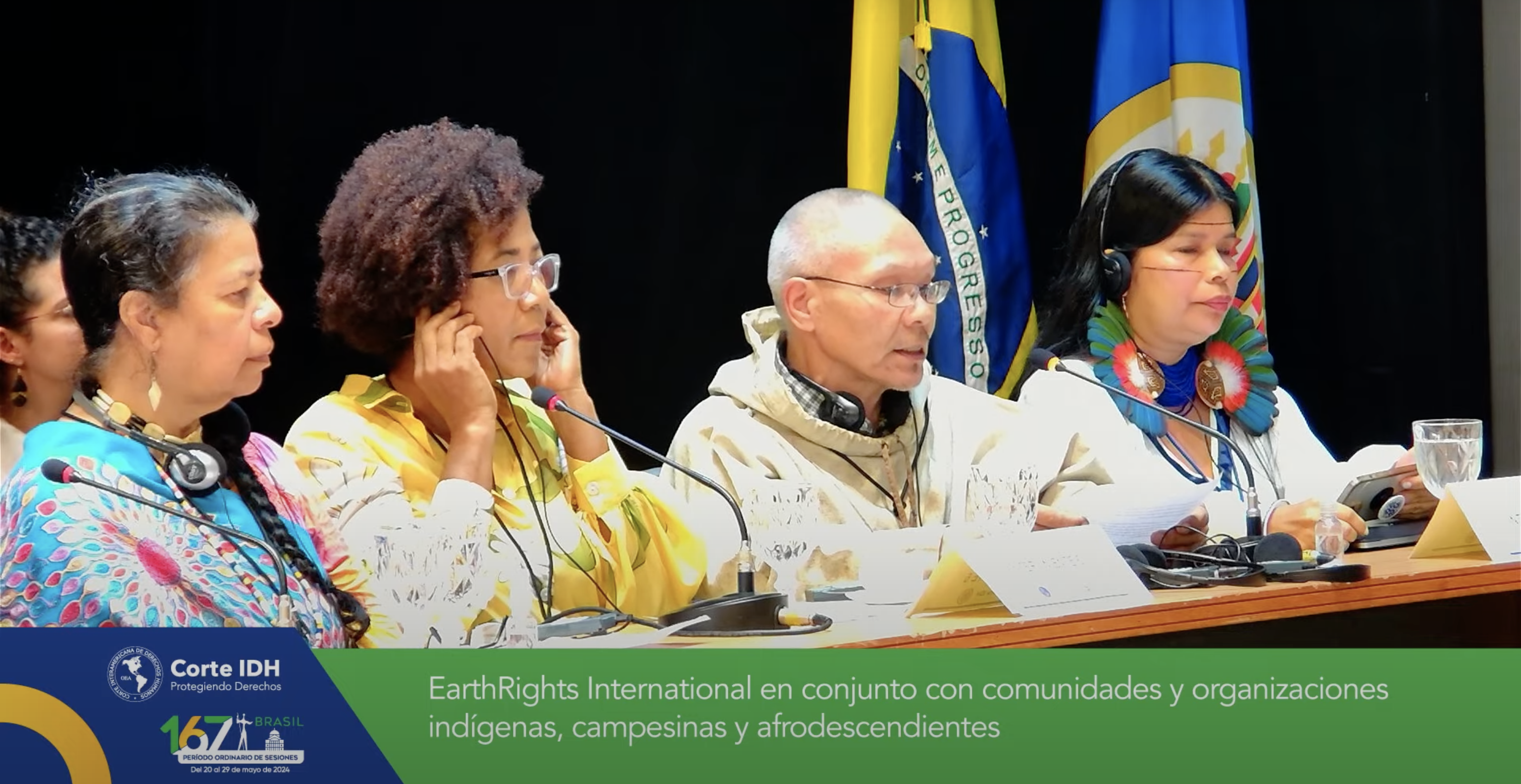Alaska Native Yup’ik among Indigenous cultures represented at international hearing on human rights and climate
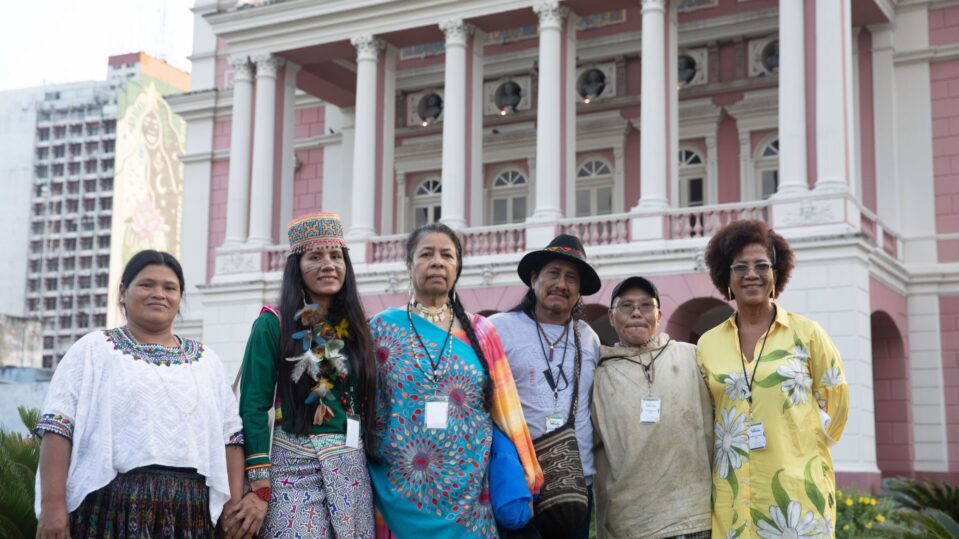
Morris Alexie (second from the right) with other Indigenous leaders and afro-descendants who provided testimonies before the Inter-American Court of Human Rights in Manaus, Brazil. Photo courtesy of EarthRights International.
Arctic Communications Specialist, Woodwell Climate Research Center
Permafrost Pathways Tribal Liaison testifies to the Inter-American Court on Human Rights
On May 18th, Morris Alexie, Permafrost Pathways Tribal Liaison for the Alaska Native Village of Nunapicuaq (Nunapitchuk), traveled for three days to South America to join EarthRights International and other Indigenous leaders from around the world at the Public Hearing on the Advisory Opinion on Climate Emergency and Human Rights.
Alexie (top right) with the rest of the delegation during the public hearing to the Inter-American Court of Human Rights. Photos courtesy of the Inter-American Court of Human Rights and EarthRights International.
More than 150 oral and a total of 265 written testimonies were received during the seven-day public hearing held in Barbados and Brazil. Indigenous Peoples, youth, Afro-descendant, Tribal, and rural communities, among others, testified with firsthand accounts of the severe impacts that climate change is having on their communities.
Prior to the hearing, EarthRights International and 25 allied communities and organizations prepared and submitted an amicus curiae brief to the Inter-American Court of Human Rights urging the Court to prioritize the protection of Indigenous Peoples’ rights in the face of climate change. The Office of the Special Rapporteur for Economic, Social, Cultural, and Environmental Rights of the Inter-American Commission on Human Rights visited Nunapicuaq (Nunapitchuk) in 2023 to meet with the community about the environmental hazards unfolding in their village due to rapid Arctic warming.

Morris Alexie, Permafrost Pathways Tribal Liaison for the Native Village of Nunapicuaq (Nunapitchuk) in Alaska. Photo courtesy of EarthRights International.
144 Alaska Native communities are imminently threatened by permafrost thaw, flooding, and/or erosion as the Arctic continues to warm faster than anywhere else on the planet. Many of these communities are now being forced to make difficult adaptation decisions—including community-wide relocation—to protect themselves and their cultural history and traditional ways of life.
Witness Alexie bring powerful stories of permafrost thaw and other enduring climate and colonial impacts all the way from Alaska to the floor of the Inter-American Court of Human Rights in Manaus, Brazil by watching the video and reading the transcript below.
“My name is Morris J. Alexie, and I am a Permafrost Pathways Liaison and former Tribal Administrator for Native Village of Nunapitchuk, which is located in Alaska in the United States. My Yup’ik name is “Chigusuk,” which means ice, similar to the ice that stabilizes my community. Our village is home to Alaska Native people of the central Yup’ik culture, which since time immemorial, our people were nomadic.”
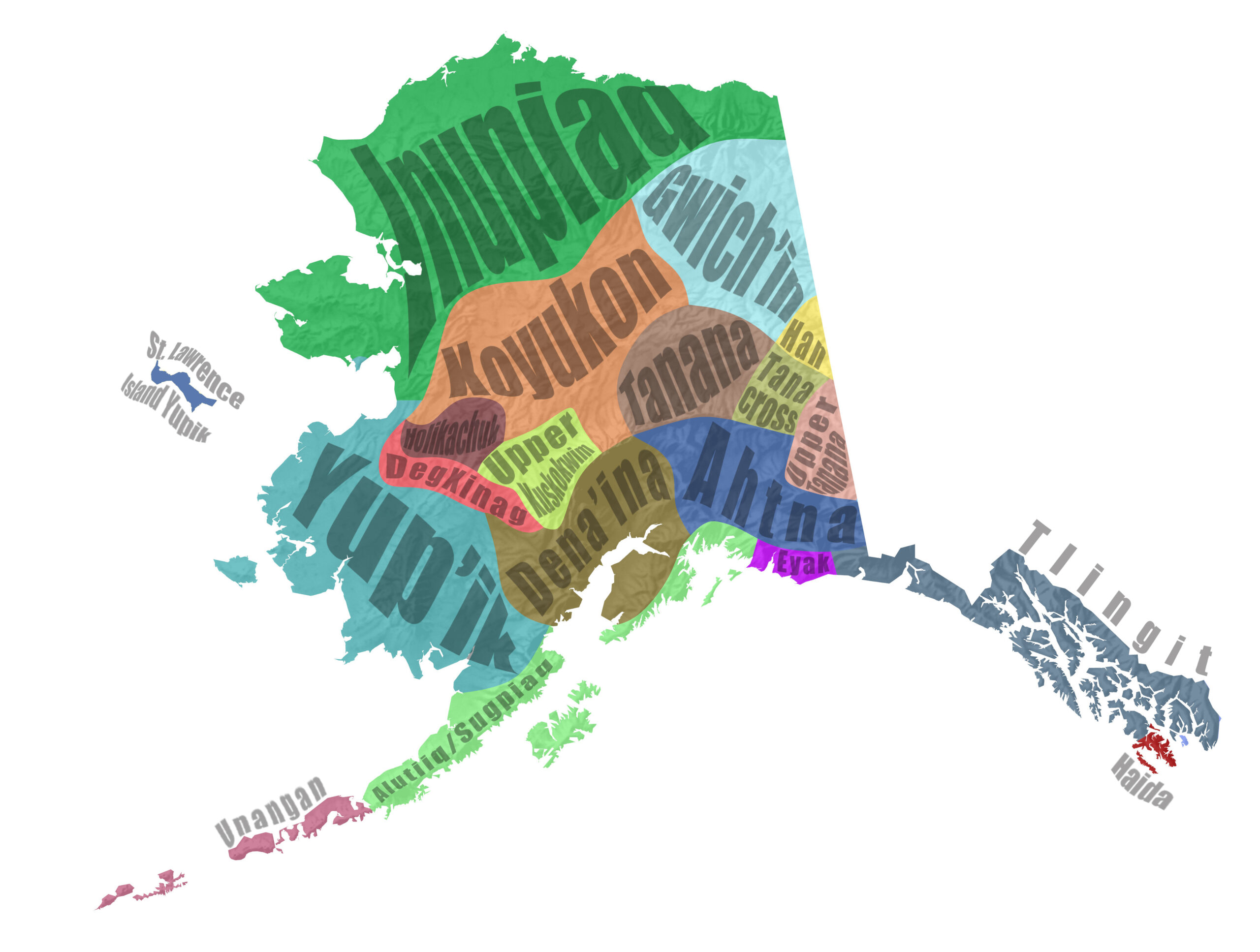
Alaska Native cultures and languages. Map by Greg Fiske / Woodwell Climate Research Center
“And we use the site Nunapitchuk for fishing and hunting during the spring and summer. In the early 1900s, the U. S. government built Nunapitchuk Village without consultation and surrounding nomadic people were forced to gather there under threat of imprisonment and taking our children away. For about 10 years, we have known that Nunapitchuk was not a safe place to live.”
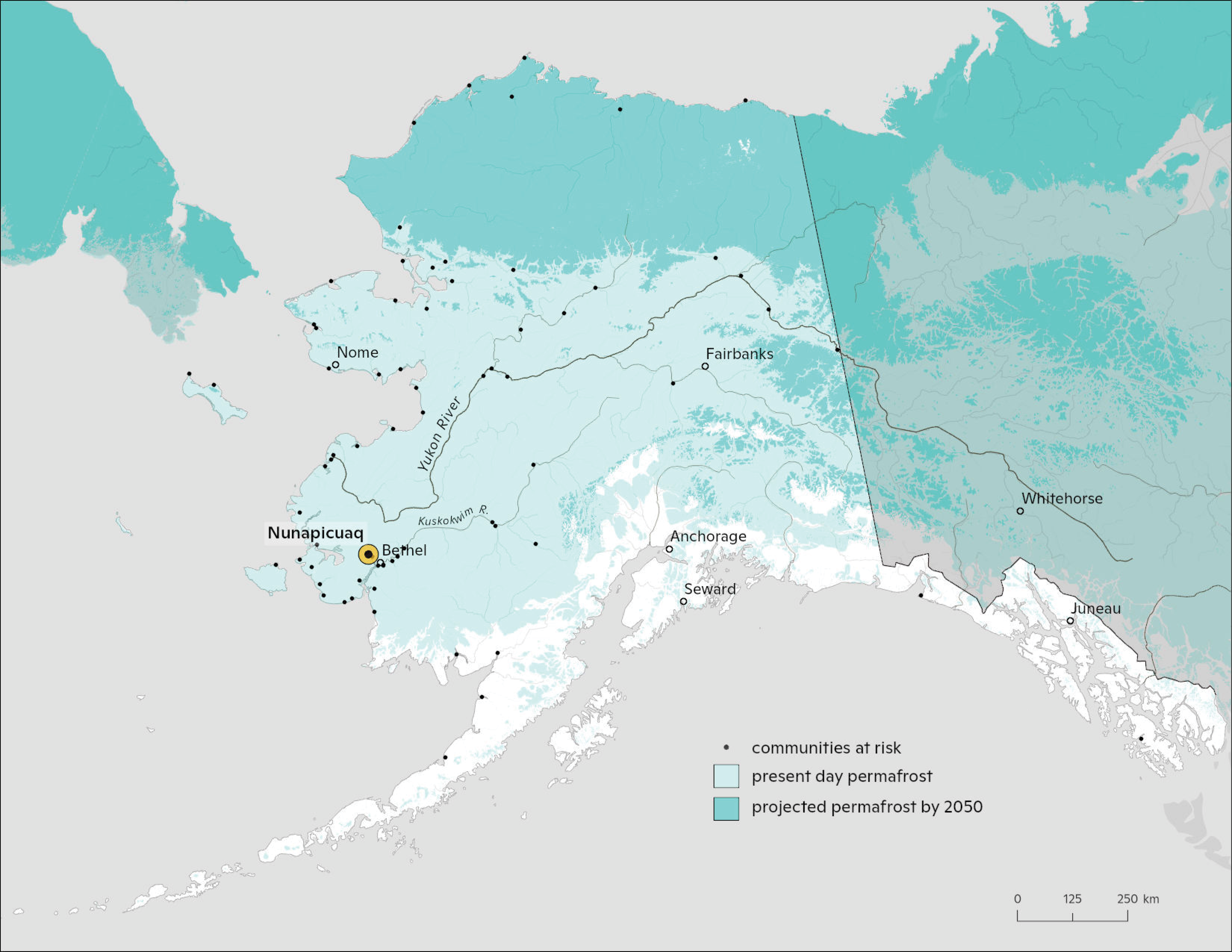
“Nunapitchuk sits on top of permafrost, which is frozen ground, which is thawing because of rising temperatures. The permafrost thaw has caused our community to sink into the ground and our homes are collapsing. Our Tribal government passed a resolution to relocate to higher ground. We identified higher ground for relocation, but we cannot move because we do not have any funding sources or institutional support.”
TOP: Flooding, permafrost thaw, and erosion in the Native Village of Nunapicuaq (Nunapitchuk).
BOTTOM: Alexie on the river bank in the Native Village of Nunapicuaq (Nunapitchuk).
Photos by Sue Natali / Woodwell Climate Research Center
“We asked the government for help, and they refused to help us, instead asking for evidence. This is a video of the government’s response, proving Nunapitchuk is unsafe. The government puts the burden on us to justify why we need to be safe. The government puts us in danger by forcing us to move to Nunapitchuk, which means the government bears responsibility for giving us healthy lives.
Quyana and thank you.”
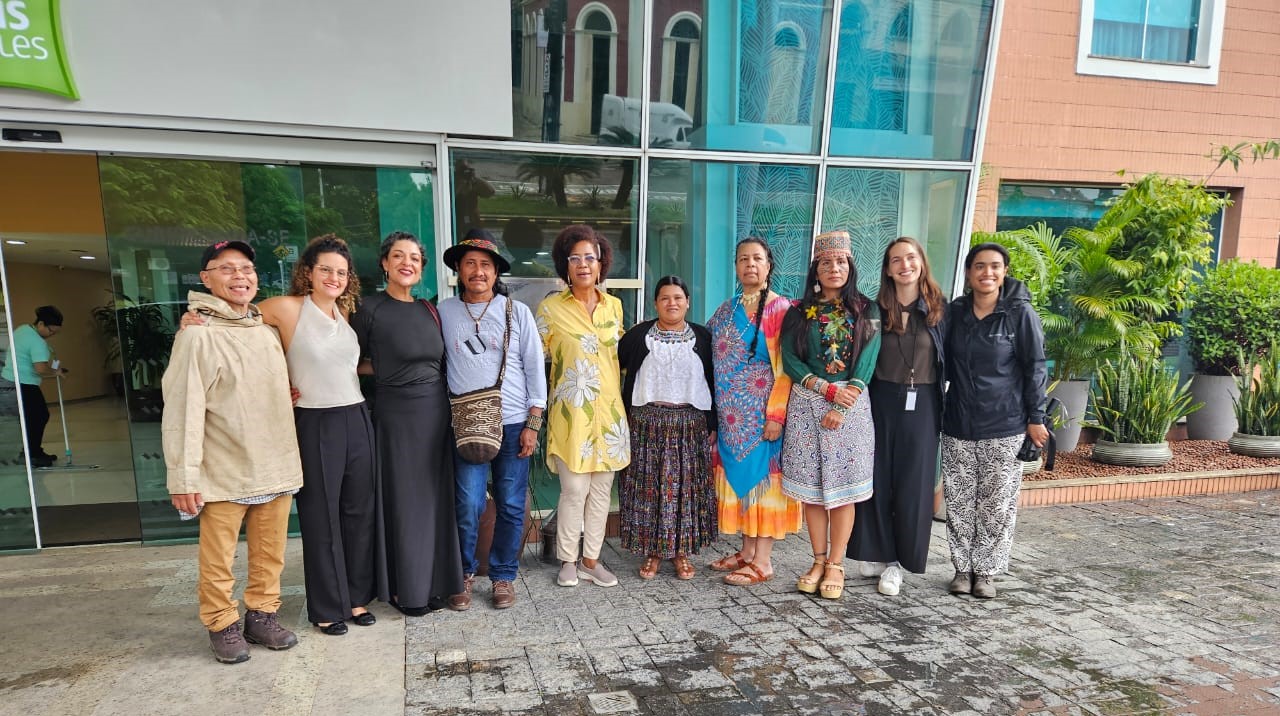
Alexie (far left) with Indigenous leaders from around the world and EarthRights International staff in Manaus, Brazil. Photo courtesy of EarthRights International.
Alexie’s testimony can be shared on Instagram and Twitter. To learn more about the compounding impacts of permafrost thaw and other ongoing climate hazards in the Native Village of Nunapicuaq (Nunapitchuk), read the four-part series produced by Alaska local media outlet KYUK below.
- Part 1: As the permafrost melts, the houses in Nunapitchuk are breaking down
- Part 2: In Nunapitchuk, infrastructure is increasingly unsafe
- Part 3: As Nunapitchuk’s tundra gives way to mud and grass, outdoor life isn’t what it used to be
- Part 4: As Nunapitchuk sets its sights on relocating, it has the support of a powerful set of allies
Go to top


